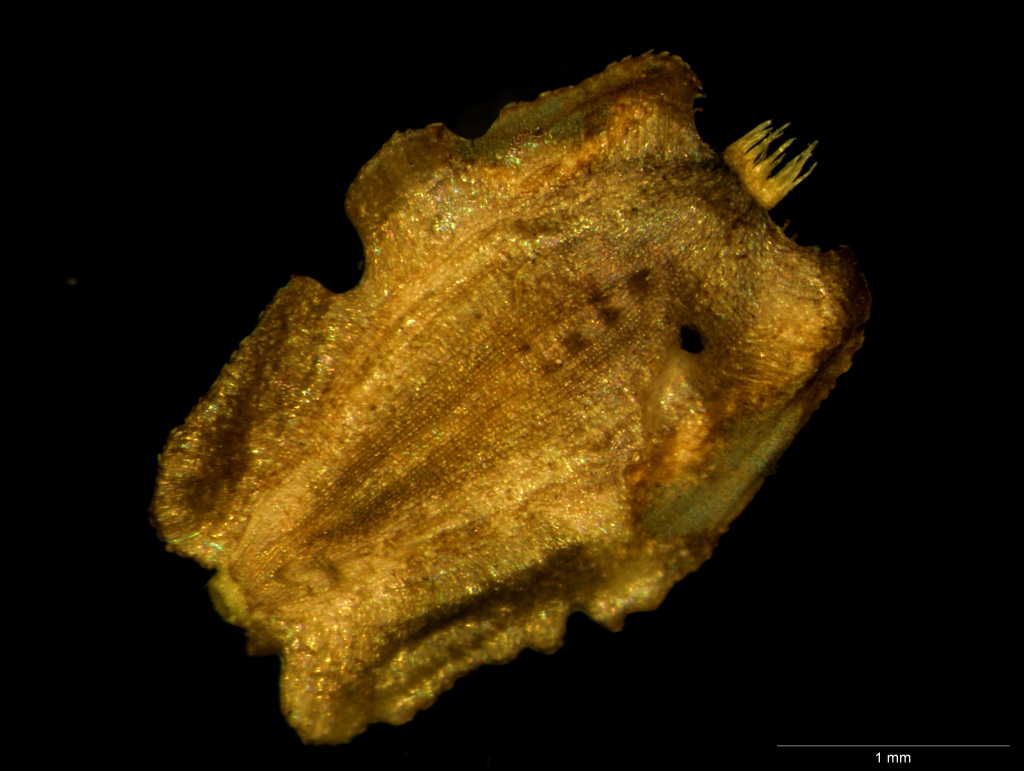Brachyscome aculeata
(Labill.) Cass. ex Less.Branches ascending to erect, 20–60 cm long. Leaves mostly cauline (basal rosette not persisting), glabrous or with glandular hairs; lower leaves oblanceolate to narrowly oblong, 2–9(–15) cm long, 5–15 mm wide, teeth or lobes (if present) mostly straight-edged, 3–10(–17), usually in apical half; uppermost leaves entire and narrowly elliptic or lanceolate. Flowering branches glandular-hairy; bracts c. 12–20, 1–2-seriate, c. equal, obovate to oblanceolate or elliptic, 5–8 mm long, 1.7–2.5 mm wide, obtuse to acute, mostly with scarious margins, these and apex sometimes purplish; ligules 10–20 mm long, white, sometimes bluish beneath. Cypselas obovate to widely obovate, 3–3.5 mm long, 2.1–2.5 mm wide, lateral faces smooth or minutely tuberculate and with eglandular curved hairs, at least immature cypselas with some glandular hairs; wing-like margins entire or irregularly dissected, with eglandular hairs; pappus c. 0.4–0.5 mm high, just exceeding apical notch Flowers Oct.–Apr.
MuM, Wim, GleP, VVP, GipP, Gold, CVU, GGr, DunT, NIS, EGL, EGU, WPro, HSF, HNF, Strz, MonT, HFE, VAlp. Also NSW, ACT. In Victoria mainly in wet sclerophyll woodland or forest in the east but also known from the south-west (Grampians region, Mt Clay, lower Glenelg River). In the high country mainly occurring in or at the edges of Snow Gum woodland, rarely extending into exposed herbfield.
Short, P.S. (1999). Brachyscome. In: Walsh, N.G.; Entwisle, T.J., Flora of Victoria Vol. 4, Cornaceae to Asteraceae, pp. 835–859. Inkata Press, Melbourne.
 Spinning
Spinning

